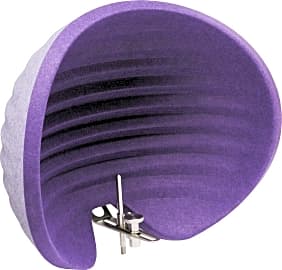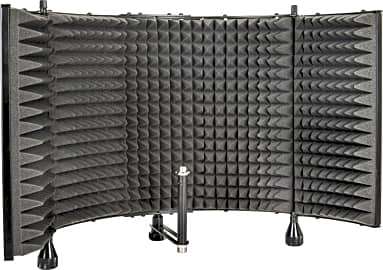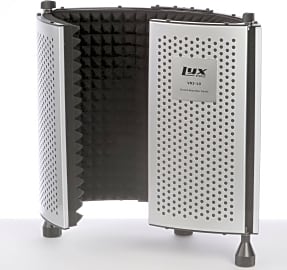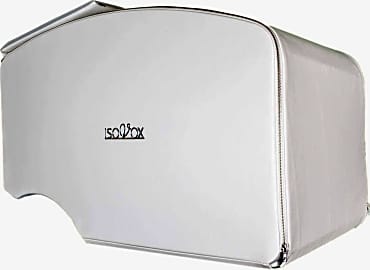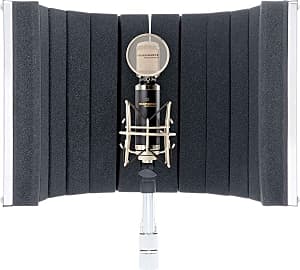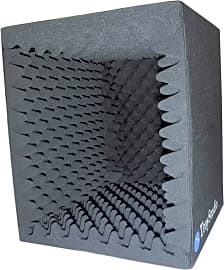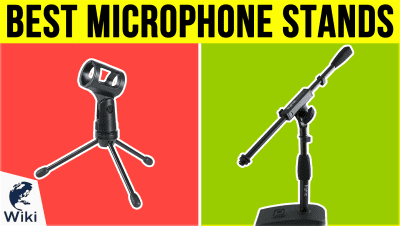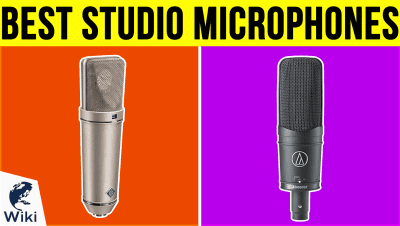The 10 Best Isolation Shields

This wiki has been updated 41 times since it was first published in August of 2015. When your environment is not ideal for recording, one of these isolation shields can make a huge difference in reducing noise pollution, echo, and reverb. Useful for voice-over artists, podcasters, singers, and musicians seeking a little extra tonal clarity, they come in a variety of styles that can be attached to most mic stands, and some have their own small feet or tripods for tabletop use. When users buy our independently chosen editorial selections, we may earn commissions to help fund the Wiki.
Editor's Notes
November 12, 2020:
We've made some changes to our rankings after reading numerous reports from customers and reviewers of audio equipment, who've put a fair amount of time into testing the real-world performance of various isolation shields. The biggest change we made was moving the Aston Halo up to second place, since it's one of the only models that blocks reflected sound from above and below as well as to the front and the sides. It achieves this without adding a significant amount of tonal coloration, which can be a real concern with cheaper foam-based models. It's only just barely edged out for the top spot by the SE Electronics Space, which is a bit lighter and less pricey, but offers comparable tonal clarity and acoustic absorption thanks to several layers of high-quality sound-baffling material. Those who have enough dedicated home studio space and a sturdy enough microphone stand may want to opt for the Halo for its extra coverage area, while the Space is probably better for those who may need to take it on the road.
We also bumped the Auralex MudGuard V2 several notches higher on the list based on its innovative design, which helps to direct unwanted sound away from your microphone. It's also one of the lightest of the high-end options, at a little under 3 pounds, making it less likely to cause your setup to wobble and tip. This weight concern is the reason we removed the Griffin Soundproof Filter from the list - it manages to significantly outweigh even models that cover a larger surface area, and the manufacturer actually recommends mounting it on a pole designed for a PA speaker rather than an ordinary mic stand or boom arm. We felt it somewhat defeats the purpose of a portable isolation shield if you can't count on being able to attach it the kind of equipment you're likely to encounter in a home studio.
We've added a few items to the list, most notably the Isovox 2, which goes all-in on audio isolation by providing a large box made of sound-dampening panels, into which you can insert your head and microphone to screen out reflections from virtually every angle. It's far and away the most expensive choice we looked at, but it's worth considering for professionals who want to record at home but can't set aside an entire room as a miniature studio. At the other end of the cost scale is the TroyStudio Portable Booth Box, a decent option for those looking to give their audio quality a boost while spending as little as possible.
A shock mount is another great way to reduce unwanted noise on your recording, and the right pair of headphones is key to properly assessing the quality of the tracks you've laid down. And if you're thinking about upgrading your equipment, you should know we've also reviewed the best microphones for podcasters and vocalists.
September 17, 2019:
If you don't have access to a vocal booth, an isolation shield is a great tool to add to your arsenal of recording equipment. While it won't give you the same results as a soundproofed studio, it will help to filter out background noise, like fans and air conditioners, and make your recordings sound cleaner and clearer. We've included budget-friendly choices along with some higher-end professional-quality models.
One of the most versatile options, the CAD Acousti-shield AS32 mounts to most standard mic stands and offers 6-way adjustability, so it works with many different types of microphones. It's made from durable 16-gauge stainless steel and lined with 53-millimeter high-density microcell acoustic foam, which helps to minimize echo, reflections, and other unwanted sounds. The SE Electronics Space, which stands for Specialized Portable Acoustic Control Environment, layers ten different materials to give you the closest thing to an acoustically-neutral environment you can get without soundproofing an entire room. Each one is built by hand and comes with specialized hardware for mounting on any mic stand or drum hardware, and it's big enough to accommodate large microphones.
At almost two feet wide when fully extended, the Monoprice Stage Right 602650 is great for desktop use. Its outer panels can be folded inward for compact storage or to adjust the amount of isolation, and it's one of the more affordably priced options. Though it can also be mounted to a mic stand, it weighs more than ten pounds, so you'll need to ensure the stand is strong enough to hold it. The Rockville RMF1 and Pyle Compact come with tripod stands, allowing you to easily set them up on a table, and they can be mounted on stands as well. Both are on the small side when the side panels are folded in, though, so they may not work with larger microphones.
Although it's rather pricey, the Aston Halo offers the added benefit of covering the top and bottom of the microphone to filter from all directions, whereas most shields only block sounds horizontally. It's made from an acoustic felt that comes from 70% recycled PET plastic, so it's lightweight despite being somewhat large, but its size does make it a hassle to store for those with limited space.
Special Honors
Kaotica Eyeball Unlike competing models that sit a few inches behind the microphone, this eye-catching little item encloses it inside a compact bubble of foam, with a small aperture into which a purpose-built pop filter slots. By channeling most of the sound energy into the recording device, it effectively offers a slight enhancement to mic sensitivity, while filtering out audio reflections from almost every angle. It's also small enough that it won't get in the way of any sheet music or lyrics you might want to mount on your stand, nor will it block eye contact with bandmates, guests, or engineers who are in the studio with you. kaoticaeyeball.com
How An Isolation Shield Works
The shields are usually molded into a shape that reduces sound reflections, and are slightly vented to allow the microphone to breathe.
Microphones amplify any sound that goes into them, but that can include unwanted audio from around the room. Audiences of live performances expect to hear some ambient noise, but when someone purchases a CD or a recorded version of that, they usually want clean and clear sound. Isolation shields allow performers to deliver studio-quality sound outside of the controlled environment of a recording room. This device is placed behind a microphone and blocks out any extra sound to help produce sharper vocals.
The shield is typically internally padded with acoustic foam similar to the noise blocking variety you find on the walls of a recording studio. The foam works to absorb ambient noise before it reaches the very sensitive microphone. Most models have hard outer shells that trap the sound the user wants to record inside of the shield and reduce echoes.
The shields are usually molded into a shape that reduces sound reflections, and are slightly vented to allow the microphone to breathe. If the shields were not vented, the result could be a sound that was too harsh on the listener’s ears.
Most shields have angle adjustability, so the user can move them according to where the unwanted sound is coming from. It can be hard to predict where the loudest ambient noise will originate, and the performer may need to block it out on the left, right, or even slightly above them. Some have multiple panels that can fold to alter the narrowness of the chamber, and some are large enough that the user is almost totally isolated. These are best home recordings or for events where the audience doesn't need to see the orator.
Three Famous Recording Studios
Ocean Sound Recording Studio sits in the isolated area of Giske, Norway, overlooking the ocean. From the outside, the studio looks like an old farmhouse, but inside one can find some of the most advanced recording equipment available.
From the outside, the studio looks like an old farmhouse, but inside one can find some of the most advanced recording equipment available.
The room features a double-height ceiling meant to enhance acoustics, Studer A-800 two inch recorders and a Neumann U-47, one of the most classic forms of condenser microphones. Ocean Sound also has one of the most esteemed mixing consoles, the Rupert Neve 5088 Shelford Limited Edition.
Real World Studios in Wiltshire, England is housed in a 200-year-old water mill that’s been turned into a recording venue. Along with its beautiful natural landscape, the studio has a 72 channel SSL 9000 KL K Series mixing console and two rooms designed to give either warm acoustics or a larger sound scale.
Real World Studios has living quarters on the site so dedicated recording artists can live where they work. The studio provides a capella and instrumental recording versions of every session to its patrons.
La Chapelle in Belgium is a converted 19th-century hat factory and offers a historical recording experience with its iconic CADAC A series console and analogue Euphonix mixing desk. Marvin Gaye recorded his album “Midnight Love” in the building.
It is one of the largest studios in Europe and is big enough to house a symphonic orchestra. La Chapelle’s trademark feature is its headphone monitoring system that has 16 inputs, allowing every artist to create their own headphone mix.
The History Of The Microphone
The first device that amplified the human voice appeared in Greece around 600 BCE when people would wear masks with holes designed to amplify their speech.
In 1665, an inventor named Robert Hooke created the “lovers’ telephone” which consisted of two cups attached by a stretched wire. When people spoke into either cup, the person on the other side could hear them better than they could without the device.
This included a conductive rod that sat in an acid solution.
The German inventor Johann Philipp Reis was the first person to utilize a metallic strip, which he connected to a vibrating membrane. The membrane produced a current that reportedly amplified sound. The man credited with creating the telephone, Alexander Graham Bell, attempted an early form of the microphone in 1876 with his “liquid transmitter.” This included a conductive rod that sat in an acid solution.
Three inventors in different countries unknowingly worked on a nearly identical form of the first successful microphone. David Edward Hughes in England, and Emile Berliner and Thomas Edison in the United States, produced a carbon microphone that would become the prototype for models seen today.
Edison received the original patent for the device, but many people maintain that Hughes had been showcasing his model long before his competitor filed for ownership. Edison’s model was used in the first radio broadcast at the New York Metropolitan Opera House in 1910.


